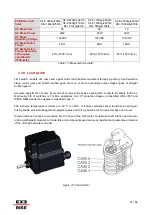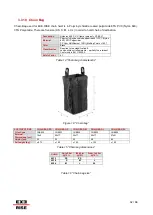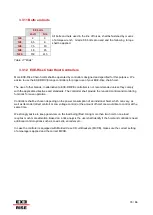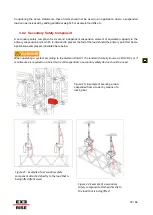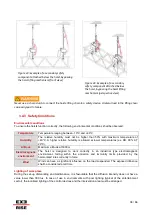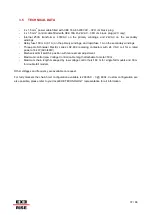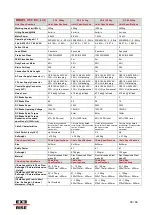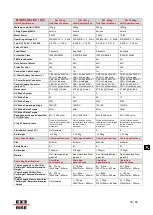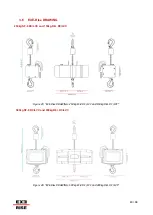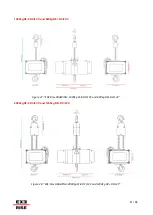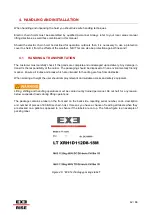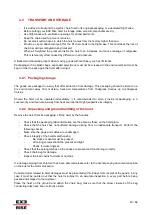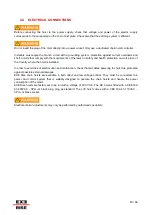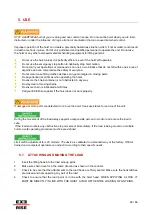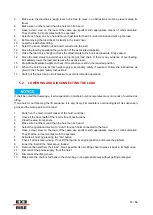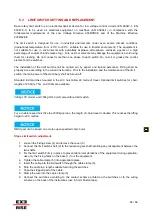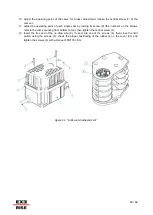
35 / 66
Figure 20: Example of securing a load
suspended from a tower by means of a
locking bar
Figure 21: Example of a secondary safety
component attached directly to the load that is
being lifted (front view)
Figure 22: Example of a secondary
safety component attached directly to
the load that is being lifted
(perspective view view)
Considering the above statements, these hoists should not be used in an application where a suspended
load can be increased by adding additional weight. For example food lifts etc.
3.4.2 Secondary Safety Component
A secondary safety component is a second independent suspension element of equivalent capacity to the
primary suspension point, which is intended to prevent the fall of the load should the primary point fail. Some
application examples are illustrated here below.
When operating a system according to the German DGUV 115 standard (formerly known as BGV D8), or if
maintenance is required on a hoist that is still suspended, a secondary safety device should be used.











